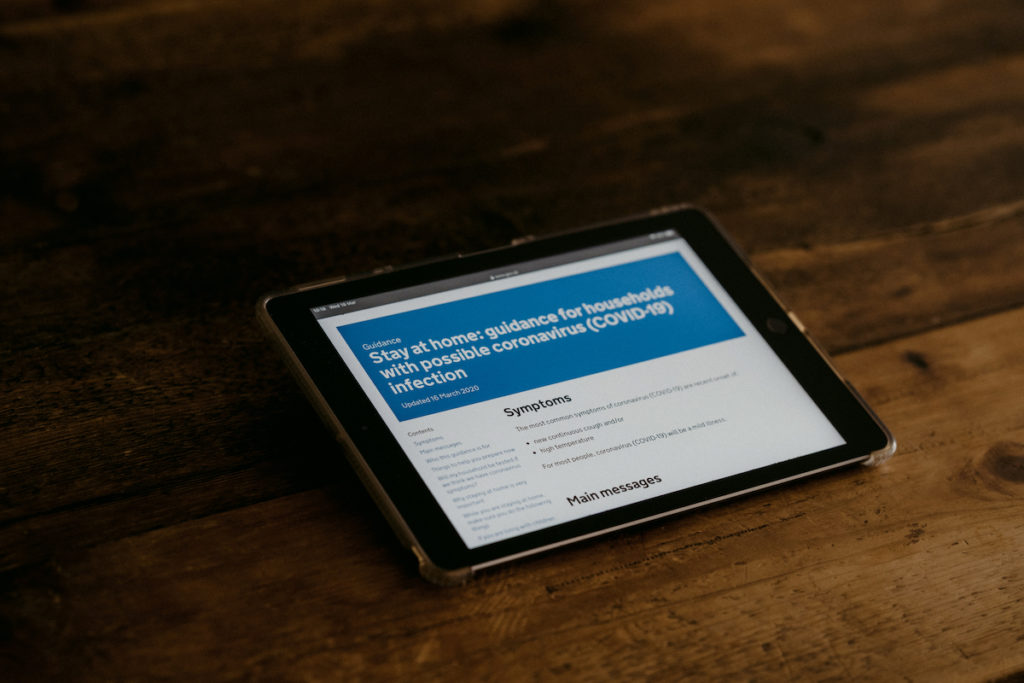Pharma and healthcare: how to tackle 4 key obstacles to accelerate digital transformation (especially now)

Since the beginning of this health crisis, the world population has inevitably had to turn to the medical world for aid. This has led to a surge in demand of specific products and services, not to mention an increase in pressure on businesses and their employees to keep up with this new demand.
It’s easy for a business to thrive when it already has everything in place to manage these new circumstances. But what if it hasn’t?
New times, new business needs
Under normal circumstances, rapid growth is something many companies desire. After all, even pharma and healthcare are businesses. However, when demand outpaces production, when supply chains are interrupted, and when the need for communication with different audiences increases exponentially, only a few companies won’t break into a sweat. It’s usually those with the sturdiest infrastructure, a long- and short-term adaptation strategy, and room for experimentation and iteration.

Most companies today deeply feel the impact of this sudden change in the market. After all, it takes time, energy and foresight to make a business digital and leave enough room to scale and innovate with speed when needed.
In addition, pharma and healthcare companies have to operate under constraints that most other businesses never encounter: rules and regulations imposed by the government (often also by the industry), strong dependencies on other players in the field, the need for additional protection from adverse events, not to mention the extra online scrutiny from consumers worried about their health.
There’s more: user behavior is also changing rapidly. Take voice search, for example. Last year, 72.9% of voice searches were about illness symptoms, 37.7% about the location of a health-related service provider and 28.2% about finding a doctor (source: voicebot.ai).
This creates an intense melting pot of challenges for pharma and healthcare companies today, not in the least for the way they can communicate.
“The traditional commercial approach based on mass-media advertising, hefty sales forces, ready access to physicians, and relatively uninformed patients is falling short. In particular, companies are failing to engage with patients in the early stages, when they look for information about symptoms.” – McKinsey

Unique obstacles to getting your message across
Pharma and healthcare companies operate in a highly regulated industry when it comes to communication. Each message must meet very high standards in terms of transparency. There is also a limit on the messages that can be aimed at a general audience.
Brands in this industry communicate in both public and private environments (for example product information for patients vs legal information for medical professionals) and are therefore required to create multiple customer journeys that can differ quite substantially from one another (for example journeys suitable for patients vs journeys for decision-makers in the healthcare industry).
“Nearly 40 percent of pharma companies admit they do not understand these journeys well enough to map digital touchpoints and align them with their digital strategy.” – McKinsey
Even when these companies manage to reach their target audiences in the correct (legally approved) environment with messages that pass compliance – their struggle isn’t over. Next, they need to compete against a huge number of medical advice websites, self-proclaimed health gurus and conflicting educational videos from disparate sources in order to get and keep their audience’s attention.
In short: they need to have a strong digital marketing and communication plan in place to deal with legislation without losing the impact of their communication, to engage different audiences via different channels and to improve brand performance online.
It’s clear that there are plenty of obstacles.
Yet, they are not impossible to overcome…

Unique obstacles require unique solutions
When a situation is different from that in other markets, it’s only logical that the standard approach won’t work. But that is no problem if you’re the User Agency. At Emakina, we have always looked at every client’s individual situation before recommending a course of action. We don’t offer one-size-fits-all solutions, we craft tailor-made solutions.
If we look at the +100 pharma and healthcare clients we’ve served over the years, we do see four recurring obstacles for which we have developed methods to tackle them at a strategic level.
The first common obstacle: missing user insights
We noticed that a significant portion of our clients in the pharma and healthcare sector didn’t have a clear view on their customer journeys and recent shifts in user behavior at the start of their projects. When dealing with multiple audiences and multiple touchpoints, a deep and thorough understanding of each journey is a must for identifying the best solutions for each situation.
When our clients already had these journeys, we audited them to identify the points that needed improvement as well as the points that presented new opportunities. If they didn’t, we used a specific set of tools (social intelligence, focus groups, mystery shopping, …) to help them to gather data and identify opportunities. We prioritized what we found in terms of impact and ease to implement. And we helped to build solutions.
We didn’t stop there, because gathering user data is an ongoing process: we improved current data streams, set up new ones if needed, and connected everything in (sometimes real-time) dashboards.

Second common obstacle: low maturity in digital communication
A subset of companies in our pharma and healthcare portfolio came to us because they were relatively new to communicating online. They had yet to discover how to deliver a message with impact on a variety of channels. Whether it was their corporate website, a campaign, a set of emails or social media posts, reaching the right target group with the right message was an ongoing learning process. One we gladly helped them accelerate: we taught them how to understand their data and turn it into actionable input for communication, we explained how to identify the right KPIs and understand how to track them, and we trained the staff on all aspects of digital communication.
Third common obstacle: constraints on creativity for digital
Because of the heavy legal framework within which pharma and healthcare businesses need to operate, getting creative for communication purposes isn’t always easy. We found that companies tended to restrict the creative process at the root, not leaving any room for out-of-the-box ideas or small tests with new content types.
This would often result in ‘safe’ content, which did not stand out from the competition and wasn’t always very attractive. Luckily, Emakina creatives love a challenge. Even in a short time span and under pressure, they can deliver ideas and executions that go well beyond what internal teams can deliver. When our creatives feed internal teams with this type of creative oxygen, new conversations happen internally, and procedures for creating and publishing content get a chance to evolve.

Fourth common obstacle: lack of profiles and manpower
In the pharma and healthcare industry, teams are created based on their knowledge, and collaboration across disciplines and companies is nothing exceptional. This should be the same for digital efforts – though we have found it usually isn’t. Getting the right people together to make a project happen, was often limited to in-house profiles. By adding complementary profiles from outside the company, with a can-do attitude and a focus on delivery, digital projects could be carried out faster and with bigger amplitude.
As Emakina is a group of more than 1.000 strong, its clients have access to any profile their project could benefit from.
We have the manpower to build the applications a company needs, on the platform that suits their situation best. We can integrate technology, connect silos, set up data streams, teach the agile methodology and produce great content because we have both the expertise and the manpower to do so for our clients.

In conclusion…
Whatever a pharma or healthcare company faces, they’re not alone. The entire industry faces a unique mix of obstacles and constraints that require adapted strategies. Yet strategy alone is not enough: to deal with the 4 main obstacles, healthcare and pharma companies need a trustworthy partner who is up to speed with everything digital, who deeply understands users and their changing behaviors, and can offer the manpower to build whatever answer to the problem is required.
Because securing the future of a company, starts today. You can find more inspiration to help your business thrive on our blog, or you can give simply us a call.
Images:
National Cancer Institute, Dimitri Karastelev, Annie Spratt, Austin Distel, Ryan Mendoza, You X Ventures
Our recent blog posts
See all blogs-
How is AI’s synthetic data enhancing User Experience Research? Technology

-
Web3.AI Rising : How new technology can add value to your business

-
How generative AI helped us create an e-commerce app – with personalised content – in just 2 weeks Technology

-
Can you build a foodie app in 3 days using Generative AI? (Spoiler alert: yes!)

